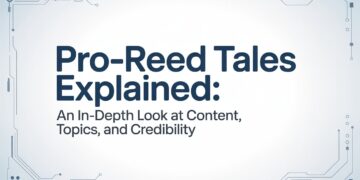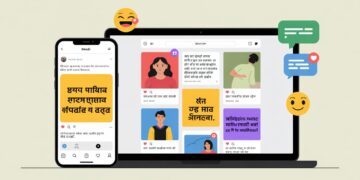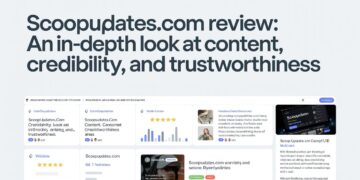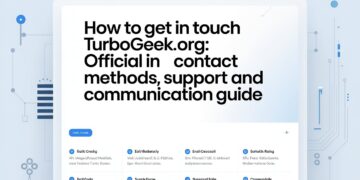Key Takeaways
- Effective web design is built on user-centered principles, prioritizing comfort, clarity, and effortless interaction over visual flash.
- Page speed, mobile-first strategy, and intelligent navigation increase engagement and foster lasting trust with visitors.
- Accessible written and visual content bridges the gap to broader, more diverse audiences while demonstrating ethical digital practices.
- A continuous commitment to listening to users, collecting feedback, and optimizing keeps websites contemporary and competitive.
- The future of web design emphasizes interactivity, personalization, and inclusion, reshaping expectations for digital experiences across industries.
Table of Contents
- Why User-Centric Web Design Matters
- Speed and Performance: The Foundation of Modern UX
- Simple Navigation for Seamless Journeys
- Content That Connects: Writing and Visuals
- Designing for Accessibility and Inclusion
- The Value of Mobile-First Approaches
- Ongoing Optimization and User Feedback
- Looking Ahead: Future Trends in Web Design
Why User-Centric Web Design Matters
As the internet becomes even more essential to daily life, users’ expectations for website quality continue to rise. Gone are the days when a flashy landing page or a colorful palette alone could impress. Today, the most successful sites anticipate and respond to visitor needs from the first click, recognizing the importance of empathy at every stage. User-centric design is not just a philosophy—it’s a strategic advantage that considers every interaction, from navigation flow to messaging tone. This approach helps users feel understood, respected, and able to accomplish their goals with minimal friction, whether finding vital information, purchasing a product, or connecting with a community. Building these experiences requires a skillful fusion of technology and psychology. Teams and individuals who partner with custom Webflow design experts benefit from specialized knowledge in visual storytelling, digital architecture, and responsive frameworks. Such expertise transforms abstract concepts into visually cohesive and intuitively structured platforms. Businesses prioritizing UX enjoy more repeat visitors, enthusiastic referrals, and lasting customer relationships. In short, user-centric web design supports short—term results and is the foundation for sustainable growth in an environment shaped by constant digital evolution.
Speed and Performance: The Foundation of Modern UX
Modern users gravitate toward efficiency; they are quick to judge and even quicker to move on. Visitors may not linger long enough to recognize the value offered if a site lags or clutters its device with bloated code and images. Studies show that nearly half of users expect pages to load in two seconds or less, and about 40% will leave entirely if a load takes longer than three seconds. In competitive markets, such minor delays can result in significant drops in traffic and credibility. Staying ahead means prioritizing every technical and creative factor that impacts performance. Regularly compressing images, utilizing next-generation file formats, and implementing lazy loading for non-essential assets can provide dramatic speed boosts. Code cleanliness, caching strategies, and minimal third-party scripts are just as vital as they reduce server requests and increase stability. Performance isn’t just for user comfort; search engines now weigh site speed heavily in ranking criteria, rewarding the quickest sites with premium visibility. Tools like Google PageSpeed Insights break down complex data into clear recommendations, empowering website owners to take immediate and ongoing action. Investing in performance optimization leads to a virtuous cycle—higher engagement, improved metrics, and stronger user loyalty.
Simple Navigation for Seamless Journeys
Navigation is the backbone of every user experience, subtly directing how visitors move through a site and what they ultimately accomplish. Even a beautifully designed homepage loses all meaning if menus are verbose, scattered, or unpredictable. Research encompasses hundreds of eye-tracking studies that prove users naturally seek familiar, ordered layouts. Well—organized menus ease the cognitive load and gently guide exploration. Ideally, users should be able to find any content in no more than three clicks, with no excess or confusing options to trip them up.
- Strategically group content categories to reflect user priorities and mental models.
- Use clear, consistent language in menu options to eliminate ambiguity.
- Incorporate sticky menus or breadcrumb trails for websites with complex architectures.
- Place search functionality in a prominent position for content-heavy environments.
Well-planned navigation creates a sense of trust and control, allowing visitors to act with confidence. For growing organizations, investing time in mapping out and regularly auditing navigation structures helps accommodate new sections or services without overwhelming the user. In digital strategy, the best website isn’t necessarily the one with the flashiest graphics but rather the one that makes complex journeys simple and delightful.
Content That Connects: Writing and Visuals
At its best, website content performs a dual function: it informs while it inspires. Whether delivering technical specifications, sharing inspiring stories, or guiding users to take action, every word and image should serve a deliberate purpose. Today’s web content embraces brevity without sacrificing personality, distilling complex ideas into digestible sections. Headlines and subheadings lead the way, allowing time-pressed users to identify relevant information and decide where to dive deeper quickly. Visual elements aren’t mere decorations—they signal hierarchy, mood, and intent. Drawing from the Smashing Magazine guide to accessible web content, using ample white space, scalable vector graphics, and legible font pairings directs attention and makes reading less taxing. Color contrast, image captions, and alt text enhance comfort and boost accessibility across every device or assistive tool. The most successful sites layer word and visual content for a cumulative effect: infographics clarify complex data, strong CTAs drive conversions, and supporting images give context without distraction.
- Use meaningful headlines and subheadings throughout the page.
- Segment long passages with lists, callouts, and media for clarity.
- Provide context for images and videos through descriptive captions and alt text.
- Prioritize user needs and curiosity—don’t just fill the space; make every element count.
Ultimately, content that connects does so by being relevant, authentic, and consciously crafted for the intended audience. The human touch resonates, encouraging users to stay and return.
Designing for Accessibility and Inclusion
Accessible design is both a moral imperative and a business benefit—by making websites usable for everyone, brands demonstrate social responsibility and gain access to a broader market. Making a site accessible starts with proper color contrast and text sizing, ensuring that users with visual impairments or color blindness can perceive all information. Descriptive alt attributes for images, properly labeled form fields, and intuitive navigation support the needs of those using screen readers or keyboard-mapping devices. Video and audio content should always be paired with captions or transcripts, enabling users with hearing loss to remain fully engaged. Thoughtfully designed interfaces—ones that avoid flashing elements, minimize cognitive load, and cut down on unnecessary animations—are critical for those with sensory sensitivities or neurodivergent conditions. Adhering to the Web Content Accessibility Guidelines (WCAG) is a best practice that aligns with evolving legal requirements across many regions. With free tools like WAVE providing site-wide compatibility checks, digital inclusion is more achievable than ever. By prioritizing accessibility, brands project a powerful message of empathy and modernity.
The Value of Mobile-First Approaches
Smartphones and tablets lead internet browsing statistics worldwide, shifting the focus from desktop optimization to mobile-first thinking. A successful mobile-first website anticipates scenarios like poor connectivity, smaller screens, and touch navigation. The process starts with designing the essential interface for the smallest screens, ensuring core features are easy to access and interactions remain smooth. Responsive frameworks and flexible layouts ensure content looks sharp on a phone, laptop, or monitor.
- Write concise, actionable headlines that don’t wrap awkwardly on slim screens.
- Prioritize tap-ready navigation, placing commonly used actions within the thumb’s reach.
- Compress and optimize images for faster loading, even on slower mobile data networks.
- Regularly test across devices and orientations to preempt user issues.
These strategies improve direct user satisfaction and influence site discoverability. Since search engines like Google emphasize mobile usability in their algorithms, investing in a mobile-first experience boosts organic reach and positions brands favorably in crowded digital marketplaces.
Ongoing Optimization and User Feedback
Building a strong website isn’t a one-time project—it’s a living process. Technologies, competitor standards, and user expectations shift over time, creating challenges and opportunities. Monitoring site analytics can identify issues like bottlenecks or high drop-off points while spotlighting the most engaging segments or resources. Setting up feedback channels such as surveys, feedback widgets, or heatmaps allows site owners to tap into what real users are experiencing and needing. When problems are surfaced, teams should respond with ongoing optimization. This can range from simple tasks like updating links and fixing minor bugs to strategic moves such as revising page layouts or investing in new site features. Involving real users in beta testing or asking for their thoughts before rolling out major updates cultivates deeper trust and reduces risk. By staying agile and curious, brands can keep ahead of trends while creating experiences that evolve naturally alongside their growing audience.
Looking Ahead: Future Trends in Web Design
Web design never stands still. The coming years will see the boundaries of digital space expand with breakthroughs in animation, artificial intelligence, and personalization. Expect interfaces that dynamically respond to individual users, with content, color schemes, and even layouts adapting in real-time. Interactive storytelling and micro-interactions will boost immersion, while chatbots and voice navigation meet accessibility needs and open further possibilities for engagement. As technology evolves, so too will industry expectations around privacy and accessibility. The best designers will remain vigilant, testing new ideas while centering ethics in every decision. Those who embrace flexibility and prioritize empathy can create online spaces that are not just efficient and beautiful but genuinely welcoming to all. The ongoing challenge—and the greatest reward—will always be designing digital experiences that put people first.



















